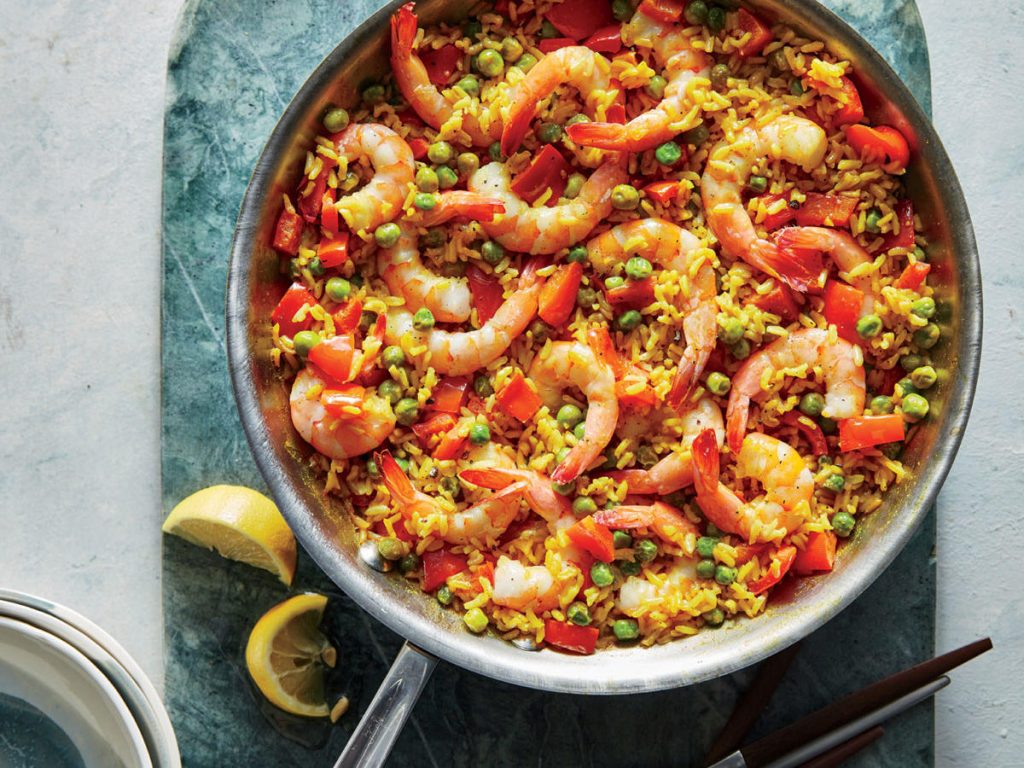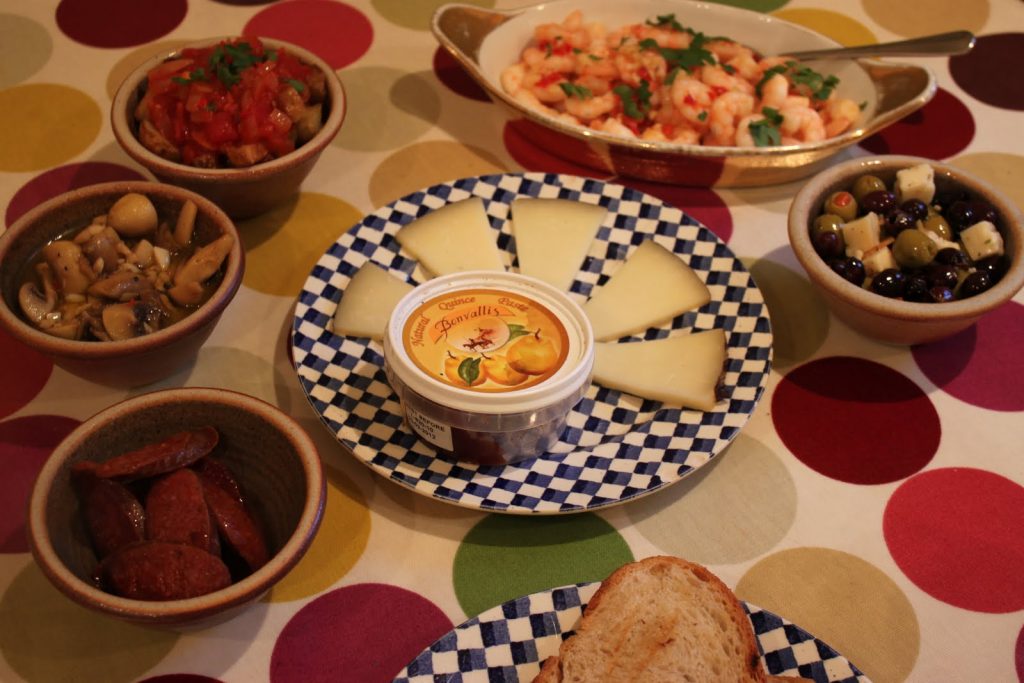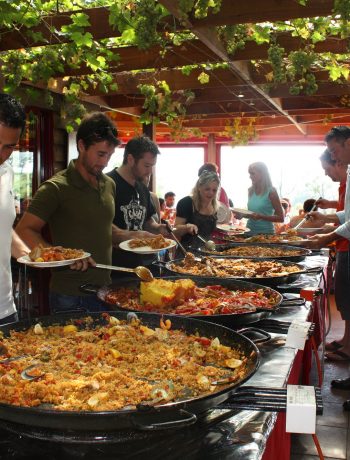1. Paella

Go with this rule. Unless you find yourself in Valencia, or at a Valencia-style restaurant, do not order the famous yellow paella Valenciana dish. You will expect a unique experience, but nine times out of ten, the food was probably frozen before getting on your plate. This is a traditional, regional dish, originally from the famous coastal city of Valencia, which evolved and is now an iconic dish of the Spanish cuisine in the whole world. However, the Spaniards think of it as something rather different. You could even offend people if you order saffron paella outside of Valencia’s borders. Each region is proud of their local food, so ordering paella in the Basque Country, for example, is like ordering a burger in Mexico.
Local alternatives: You have many other famous and tasty rice dishes to try in Spain, like arroz con pollo, meaning chicken and rice. In the north, stew is more popular than rice, and heavy soup dishes fill out the menus.
2. Sangria

A running joke in Spain is that to spot a tourist, just pay attention, as only they drink Sangria at the bars. Although this is a drink for fiestas and teenagers to drink cheaply, it is not really the traditional drink of the country, nor is it that common.
Local alternatives: In the northern parts of Spain, the locals drink calimocho, which is a mixture of red wine and coke. In the south, tinto de verano is the most popular, red wine and sparkling water. One more is lemon Fanta or rebujito, white wine mixed with 7-Up or sprite. If you wish to fit in, drink these.
3. Gazpacho

Traditionally, this dish is served only in the southern parts of Spain during the hot summer months. This is basically a cold tomato soup, and not a staple dish in the diet of modern Spaniards, at least out of Seville. Most who drink it buy cartons of it at grocery stores, as an alternative to dinner. However, it is not worth whatever you pay for it in a restaurant, as it probably comes from those same cartons.
Local alternatives: Try Salmorejo, a thicker version of gazpacho that comes from Cordoba. It is heavier and has more substance and flavor, present on menus around the country.
4. Expensive tapas

You should never pay more than 3e for Tapas, unless it is served at a fancy gastronomic bistro bar, or in San Sebastián. Costly tapas (or pinchos/pintxos in the north) are made for tourists, and as such are overpriced, of low quality, and bulk cooked. They usually go for between 1 and 2 euros or free with a drink. Tapas are to be eaten while standing and chatting and never while sitting down in a restaurant. Avoid them for lunch, as they are more a dinner dish eaten with friends, accompanied by a glass of great wine, which you should also not overpay.
Local alternatives: Ask locals for the best tapas places. The bars are usually grouped, so you will come across more of them at once, usually in the in old quarters of any city. You can easily spot them thanks to the wine barrels outside of the doors, for eating, drinking and smoking around.
5. Hot breakfasts
You should be familiar with how Spanish people eat. Breakfasts are usually small and simple, lunches get large and extravagant with several courses, while dinners are short and light most of the time. Therefore, a standard breakfast can be anything from toast or healthy cookies, to a quick café con leche and fruit, or mini baguette sandwiches. They are very rarely served warm, and almost never include regular food people are used to everywhere, like fried eggs, bacon, beans, or potatoes. Lunch usually comes at 2 or 3 in the afternoon, and many like to skip breakfast completely or take a quick noon snack, before having a large family lunch.
Local alternatives: Try tomato and olive oil toast (tostada con aceite y tomate) for breakfast, mostly served in the south and on the coasts. It is made with fresh bread, toasted and then topped with olive oil and peeled and ground tomato. Sprinkle it with salt or Spanish cured ham, and you will fit in with the locals completely. If you wish something a bit heavier for breakfast, order pincho de tortilla. This is the famous Spanish potato omelet, and you will not regret this decision.




No Comments